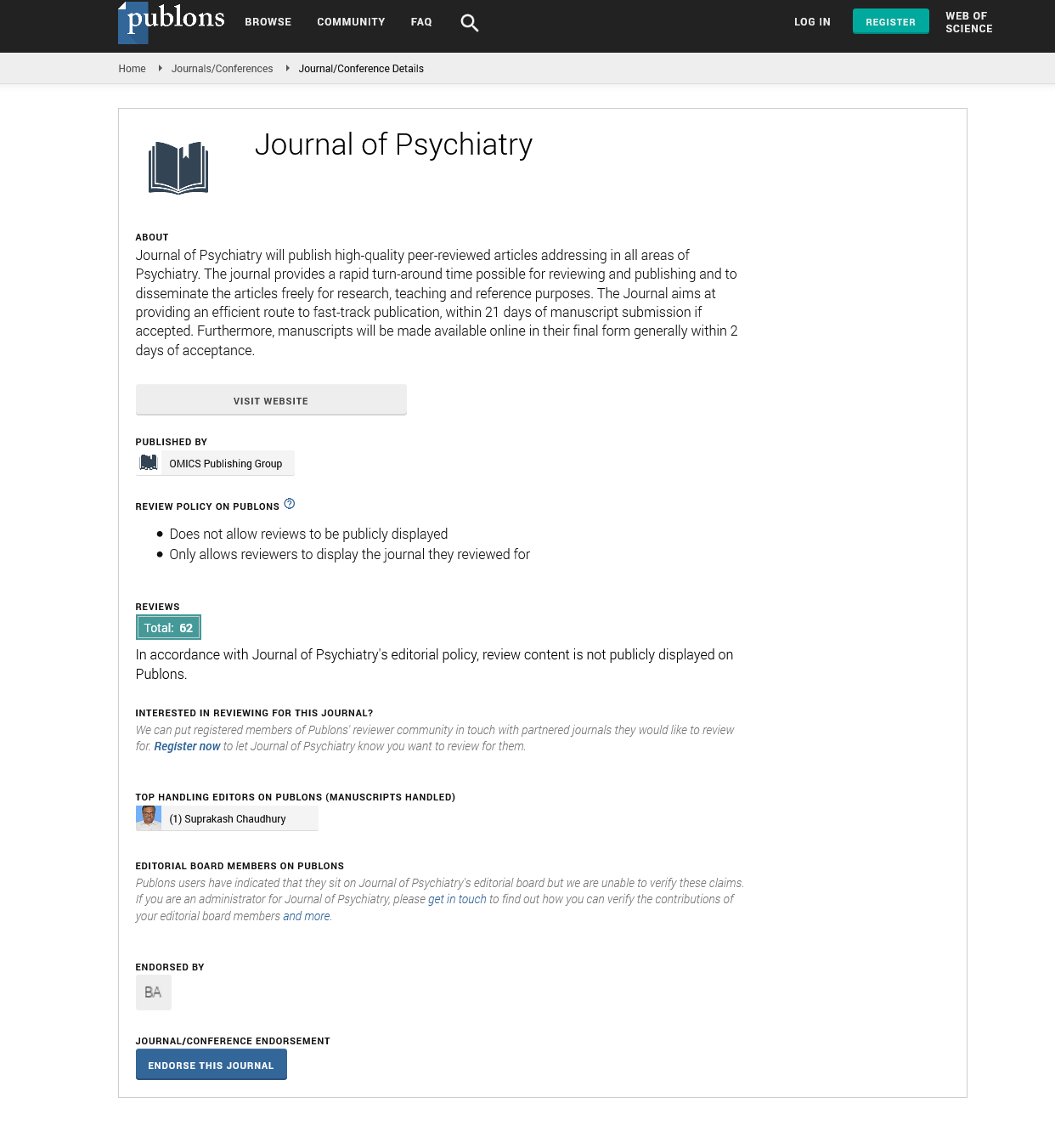Indexed In
- RefSeek
- Hamdard University
- EBSCO A-Z
- OCLC- WorldCat
- SWB online catalog
- Publons
- International committee of medical journals editors (ICMJE)
- Geneva Foundation for Medical Education and Research
Useful Links
Share This Page
Open Access Journals
- Agri and Aquaculture
- Biochemistry
- Bioinformatics & Systems Biology
- Business & Management
- Chemistry
- Clinical Sciences
- Engineering
- Food & Nutrition
- General Science
- Genetics & Molecular Biology
- Immunology & Microbiology
- Medical Sciences
- Neuroscience & Psychology
- Nursing & Health Care
- Pharmaceutical Sciences
Abstract
Dementia and its associated factors among alcohol Drinkers in Gondar town, Northwest Ethiopia, 2023
Mihret Melese*, Mihret Getnet, Dagnew Getnet Adugna, Dereje Esubalew, Lemlem Maru, Agnche, Michael Tsega,Zemenu Wubie Bayeleyegn, Assefa Kebad Mengesha, Gashaw Sisay, Liknaw Workie, Limenh, and Mengistie Diress
Background: Alcohol-induced dementia arises from prolonged and heavy alcohol consumption, leading to direct brain damage caused by alcohol neurotoxicity. The World Health Organization (WHO) estimates that globally, 50 million individuals are affected by dementia, with 10 million new diagnoses annually. Among alcohol abusers, the prevalence of alcohol-related dementia ranges from 10% to 24%. Despite a significant surge in alcohol consumption in Ethiopia, alcohol-related dementia remains understudied as an independent medical condition. There is a noticeable dearth of research on the prevalence of alcohol-related dementia and its associated risk factors in Ethiopia. Consequently, this study aims to fill this gap by investigating the prevalence of alcohol-related dementia and identifying contributing factors among adult alcohol consumers in Gondar town, northwest Ethiopia in 2023. Method and materials: A community-based cross-sectional study was conducted from January 18 to April 28, 2023, in Gondar town, Northwest Ethiopia. In this study, 427 study participants were included by a systematic random sampling technique, with a 96.4% response rate. The interviewer-administered questionnaire, consisting of a dementia standardized measuring tool (MMSE) test and a Computed Tomography (CT) scan, was employed to collect sociodemographic and clinical data. EpiData version 4.6 and SPSS version 25 were used for data entry and statistical analysis, respectively. Descriptive summary statistics like proportion and frequency were used to present the data through tables and graphs. Binary logistic regression was used to determine the associated factors, and a decision for statistical significance was made at a p value of (≤ 0.05). Result: Out of 427 study participants, 317 (74.2%) were male. The mean age of the study participants was 34.5 (± 0.49 SD) years. The prevalence of dementia among alcohol abusers was 23.2% (95% CI: 19.4-27.4). In multivariable logistic regression analysis at 95% CI, age between 36 and 49 years (AOR=4.2; 95% CI: 4.8-7.33) and 50-65 years (AOR=6.4; 95% CI: 4.45-12.86), smoking cigarettes (AOR=3.4; 95% CI: 1.86-11.67), physical exercise (AOR=6.04; 95% CI: 5.6-9.76), Khat chewing (AOR=5.7; 95% CI: 4.32-9.78), diabetic mellitus (AOR=3.6; 95% CI: 1.43-5.94), head injury (AOR=9.8; 95% CI: 5.7-12.96), and depression (AOR=8.7; 95% CI: 4.97-13.76), were significantly associated with dementia. Conclusion and recommendation: The findings of this study indicated that the prevalence of dementia among alcohol abusers was high. In the current study, age, smoking cigarettes, Khat chewing, diabetes mellitus, head injury, depression, and physical exercise were significantly associated with dementia. Since this cross-sectional study lacks identification of causality, further studies on dementia and its burden with objective tools and a longitudinal study design are required to make better conclusions and recommendations.
Published Date: 2025-12-08; Received Date: 2023-12-12

